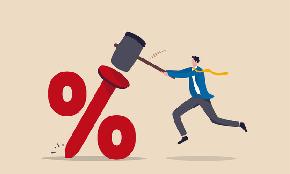 Santora (standing): “2016 represented another healthy year for the Manhattan office market.”
Santora (standing): “2016 represented another healthy year for the Manhattan office market.”
NEW YORK CITY—Despite talks of the beginning of the end, Cushman & Wakefield Wednesday reported during a Midtown press briefing that the Manhattan office leasing market posted year-end new leasing activity totaling 26.3 million square feet. Overall asking rents rose 1.7% to $72.82-per-square-foot, with overall class-A asking rents increasing 2.2% to $78.43 per square foot while class-B rents decreased by 1.0% to $60.11 per square foot.
“2016 represented another healthy year for the Manhattan office market,” declared John Santora, vice chairman, president, New York tri-state region. “Due to solid fundamentals, we expect momentum to carry over into 2017.”
Midtown and Midtown South asking rents rose 2.3% and 1.7%, respectively, from the previous year with asking rents in Midtown closing the year at $78.39 per square foot and Midtown South at $70.86 per square foot. Downtown asking rents dipped just 0.5% from the previous year to $59.30 per square foot.
Manhattan’s vacancy rate closed the year at 9.3%, a 0.8% increase from the previous year. Midtown vacancy sits at 9.6%, Midtown South’s at 6.7%, while Downtown’s vacancy rate increased to 10.2% due to new space that entered the market.
“Overall vacancy eased by 80 basis points; 9.3% is a relatively healthy number,” noted Richard Bernstein, executive vice chairman. “Net effective rents have gone down and concessions have gone up—landlords are trying harder to keep tenants.”
He continued, “Pricing eased in Midtown and the fundamentals are good Dowtnown, with healthcare gaining strength as well as the TAMI sector. We think the submarket will fare well in the next few years. To say Midtown South is white hot is an understatement. It still has the lowest vacancy rate of any submarket nationwide.”
Bernstein expects deregulation and job growth to positively impact the market in 2017. “In overall leasing activity, 2016 slightly surpassed the 10-year average for new leasing, with over 26 million square feet of activity,” he says. “There’s a cautious optimism that the market will continue to grow in 2017.”
Meanwhile, principal economist Ken McCarthy cautions that while it is premature to forecast the impact the presidency of Donald Trump on the commercial real estate industry, “if the administration does what it says on taxes and deregulation, the expectation is that growth will be stronger in 2017 than the last two years, and even stronger next year.”
For the retail market, while rising availability rates and declining asking rents defined the year, 15% more deals were completed compared to 2015. Due to recent news of store closures by several national retailers, notes executive director Steven Soutendijk. “The perception is that stores are closing left and rent and there are areas with swaths of vacancies but the reality is different. The local market’s fundamentals are healthy. There are more New Yorkers and tourists here and they have more money. Total transaction volume is up, though deals are smaller.”
He continues, “Asking rents in all markets are down but they were at historical highs. This is a healthy correction we hope will spur velocity. Food and beverage leasing eclipsed all other sectors; New Yorkers take their food seriously. We expect 2017 to bring an uptick in activity as developers and landlords continue to court unique food operators.”
Following record-breaking years in 2014 and 2015, the New York City investment sales market dipped in 2016, but in a historical context, still recorded a strong year, reported Douglas Harmon, chairman, capital markets and Robert Knakal, chairman, New York investment sales.
“Real estate has become a mainstream asset classes, so allocations from pension funds and institutional investors have increased every year,” asserted Harmon. “More capital is available, and more is coming.”
Added Knakal, “Current market conditions are reminiscent of those during the recession in the early 2000s when volumes dropped but values continued to rise. We see more optimism in the market today that we have seen in about 16 months.”

















 Copyright © 2024 ALM Global, LLC. All Rights Reserved.
Copyright © 2024 ALM Global, LLC. All Rights Reserved.